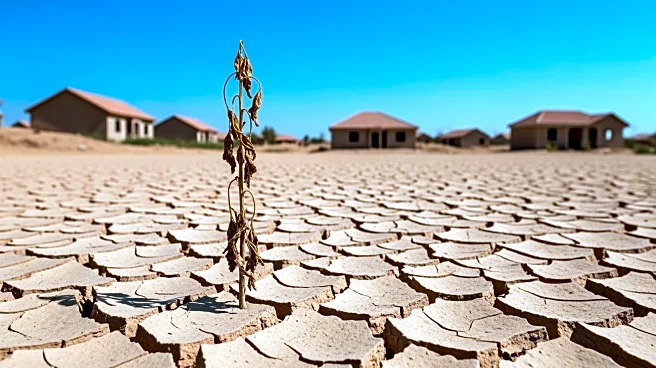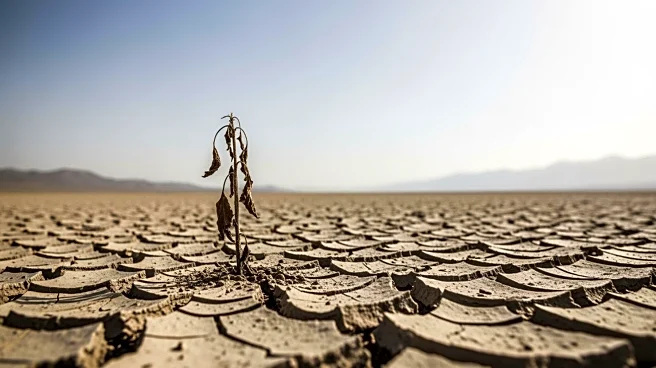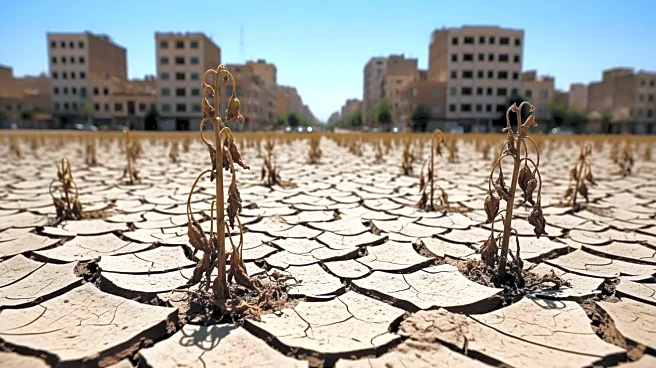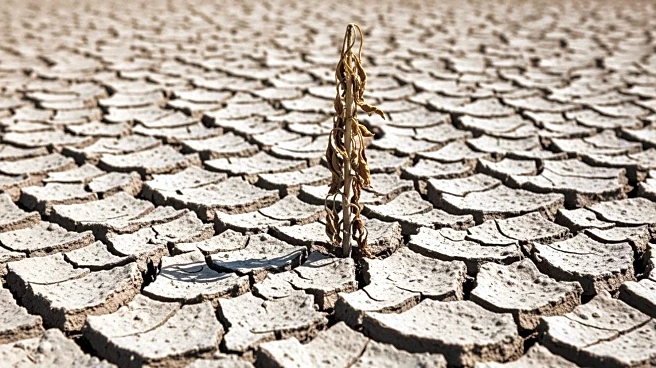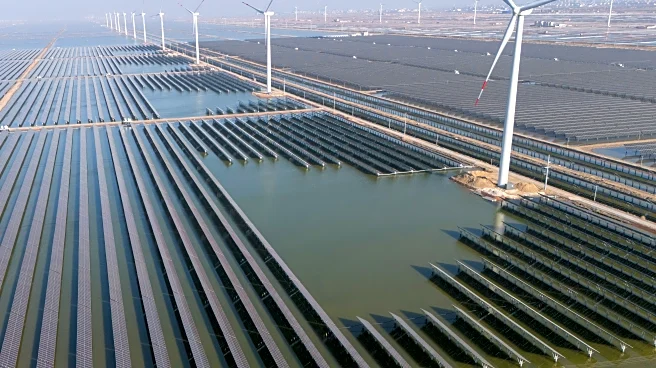What's Happening?
Iran's President Masoud Pezeshkian has issued a stark warning regarding the capital's water and energy crisis, as Tehran faces unprecedented drought conditions. The city's dam reservoirs have reached their
lowest levels in 60 years, with some dams operating at less than 10% capacity. Tehran, home to approximately 9.1 million residents, is heavily reliant on hydropower, which has been severely impacted by the drying rivers and wetlands. The situation is critical, with potential water rationing and evacuations looming if rainfall does not occur by late November. The energy system in Iran is predominantly dependent on hydropower and fossil fuels, with minimal contributions from solar and wind energy. This dependency has been exacerbated by sanctions, investor skepticism, and underinvestment, hindering diversification efforts. The crisis is further compounded by outdated agricultural practices that consume 80% of the country's freshwater, leading to drained aquifers and power outages.
Why It's Important?
The water crisis in Tehran highlights the broader challenges faced by regions dependent on hydropower and inefficient water management systems. The potential for water rationing and evacuations underscores the urgent need for modernizing irrigation practices and diversifying energy sources. The situation in Iran serves as a cautionary tale for other regions facing similar environmental and infrastructural challenges. The reliance on water-intensive industries in arid areas has exacerbated the crisis, prompting calls for relocating such industries to coastal zones where desalinated water could be utilized. The ecological impact is significant, with dust storms and the drying of Lake Urmia contributing to environmental degradation. The crisis poses a threat to public health, economic stability, and social order, necessitating immediate and strategic interventions.
What's Next?
If the drought persists, Tehran may face severe water rationing and potential evacuations, impacting millions of residents. The Iranian government may need to accelerate efforts to modernize agricultural practices and diversify energy sources to mitigate the crisis. Relocating water-intensive industries to coastal areas could be a strategic move to alleviate pressure on inland water resources. The situation may prompt international attention and potential aid, as Iran navigates the complex interplay of environmental, economic, and political factors. Stakeholders, including government officials, environmental experts, and civil society groups, are likely to engage in discussions to address the immediate and long-term implications of the crisis.
Beyond the Headlines
The crisis in Tehran reflects broader environmental and policy challenges that could have long-term implications for Iran's socio-economic landscape. The drying of Lake Urmia and the increase in dust storms highlight the ecological toll of inefficient water management and industrial policies. The situation may catalyze a shift towards more sustainable practices and policies, emphasizing the importance of integrating environmental considerations into economic planning. The crisis also underscores the need for international cooperation and support in addressing global water scarcity and climate change issues.
